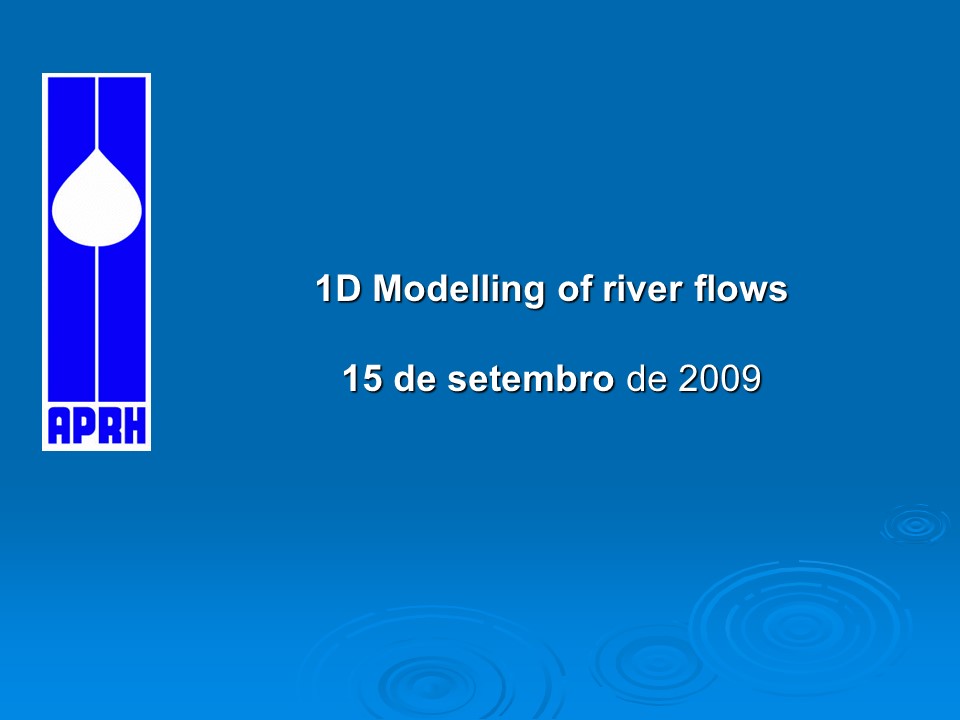
1D Modelling of river flows
Sessão Técnica
Orador: Dr. Sébastien Proust (CEMAGREF-Lyon)
18:00 – 19:00, Terça-Feira, 15 de Setembro de 2009 Pequeno Auditório, LNEC, Avenida do Brasil, 101, Lisboa
Brochura (PDF)
ENTRADA GRATUITA
A Comissão Especializada em Hidráulica Fluvial da APRH convidou do Dr. Sébastien Proust para apresentar e dinamizar uma sessão técnica sobre a modelação de cheias em rios, tema com muito interesse prático e científico, e no qual aquele Engenheiro e Investigador tem desenvolvido trabalho de investigação aplicada com reconhecimento a nível mundial.
ABSTRACT/RESUMO
Rivers have generally a compound channel configuration constituted by a main channel in the middle and floodplains on the lateral sides. For natural floods, the flow often inundates the adjacent plains, overflowing the main channel banks and invading the floodplains. Therefore, the study of such flows is important when seeking to identify flooded areas from predicted discharges, to perform flood routing in real time, or to estimate the impact of mitigation measures. In this technical session the relevance of various hypotheses/simplifications necessary for 1Dmodels to compute such flows will be discussed. The analysis relies on a comparison between various numerical models (e.g. HEC-RAS and other more complex 1D models) with experimental data for: flows in straight compound channel, in converging and diverging geometries. The objective is to allow practitioners and researchers to perform a physically based interpretation of the results obtained with 1D models. The outline of the session is as follows:
- Interest and scope of the topic.
- Physics of compound channel flows.
- The coupling of water level and discharge distribution in 1D modelling (link between errors in water level and discharge in the floodplains).
- Validity of calibrating Manning roughness coefficient (examples of different geometries, water levels and numerical codes).
- The important issues in 1D modelling.
- An alternative approach based on the separated computation of water level for each subsection.
- Open discussion.
Apresentações (PDFs):
